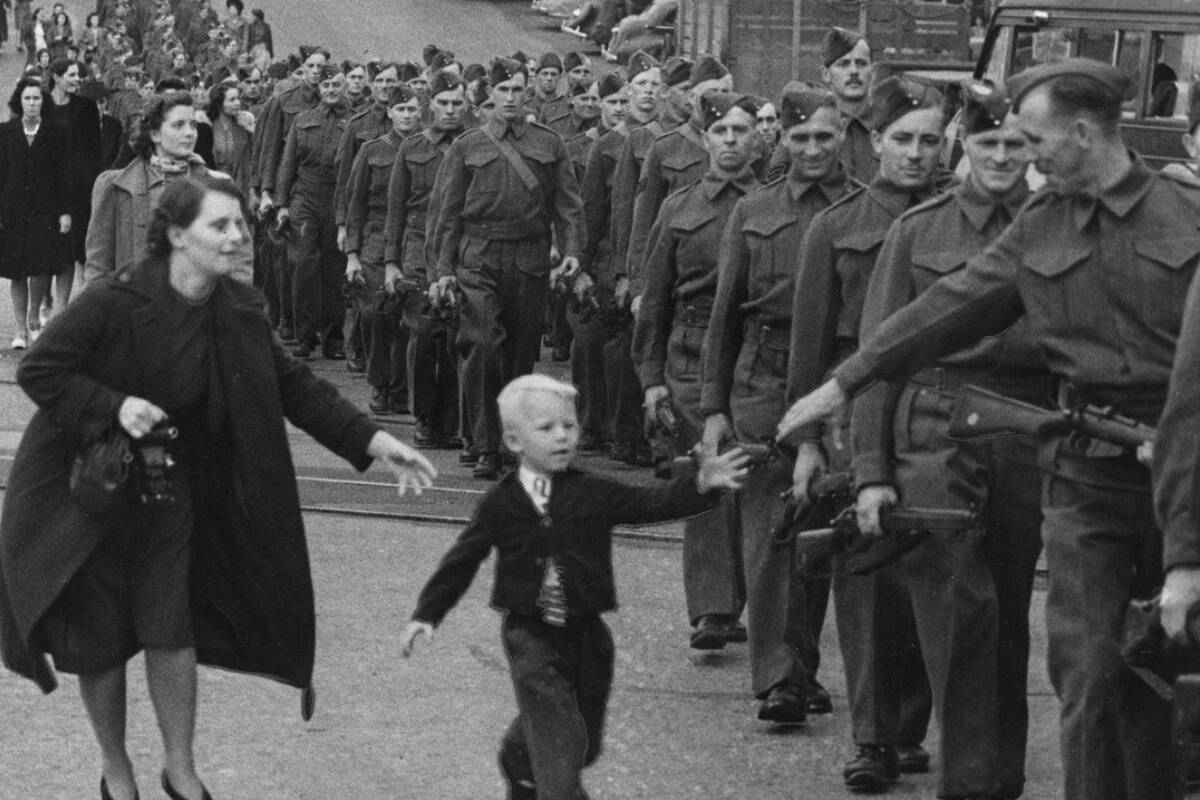by John Boivin
Local Journalism Initiative Reporter, Valley Voice
It’s one of the most iconic pictures taken during the Second World War – and it has a connection to Kaslo, Nelson, and other West Kootenay towns.
The shot of a child running towards his father, who is marching off to war, crystallized the experience of a generation of Canadians when it appeared in the Vancouver Daily Province in 1940. It was republished time and again to raise war bonds, boost morale and remind people after the war what these young men were sacrificing.
The name of the child and his father have been known for decades, but it was only a year or two ago that another soldier visible in the picture was identified.
If you count five soldiers behind the man reaching out to his son, you’ll see a square-built man standing tall, his gun strap across his chest.
“That’s my father, Harry Campbell,” says Lawrence Campbell of Kaslo. “And that’s my mom, Sophie, walking next to him.”
Harry Campbell was best known in this area for owning the Kaslo Hotel from 1960 until his death in 1973, and before that as a professional lacrosse player in Quebec and B.C. His son says he grew up knowing that it was his dad in the historic photo.
“Since I was very young,” says Lawrence Campbell. “My mom and dad are in the photo, and we had a Reader’s Digest picture of it and a Life magazine picture of it – going back to when I was seven years old,” he says. However, his image wasn’t recognized officially until a regiment historian confirmed the family’s details a year or two ago.
Lawrence Campbell, who officiated the Kaslo Remembrance Day ceremonies for years before retiring as chaplain, says his father wasn’t the only West Kootenay local in the photograph.
“There were three other fellows from this area in there, and one from Nelson,” he says, though they may not be visible in the long row of men stretching into the distance. “They’re all gone now, there’s nobody left.”
As Remembrance Day came around in 2021, Campbell says he does think of his father – but his thoughts also dwell on his uncles’ experiences during the war. While his father ended up stationed in Ottawa doing signals work, his uncles saw combat and one was captured by the Japanese.
“My three uncles served in Europe, and Hong Kong,” says Campbell, who was born just after the war. “They had a little more violent time.”
A lot has changed since he arrived in Kaslo back in the early ’60s, says Campbell.
“The whole town was full of veterans then,” he told the Valley Voice. “I have some old Super 8 movies and half the town was veterans and war brides. It was the same with other towns here in the Kootenays.”
But Campbell downplays his family’s small role in the historic picture, which eventually was used as a commemorative coin and postage stamp, ensuring its place in the country’s history.
“It is really something,” he admits. “But the only special thing about my folks is they happened to be in the picture,” he says. “We never really made a big deal of it.
“But I think it’s important to honour everybody, and continue to do so. War is a tough business.”
READ MORE: ‘We managed to survive’: Abandoned Second World War training airfields fading away

